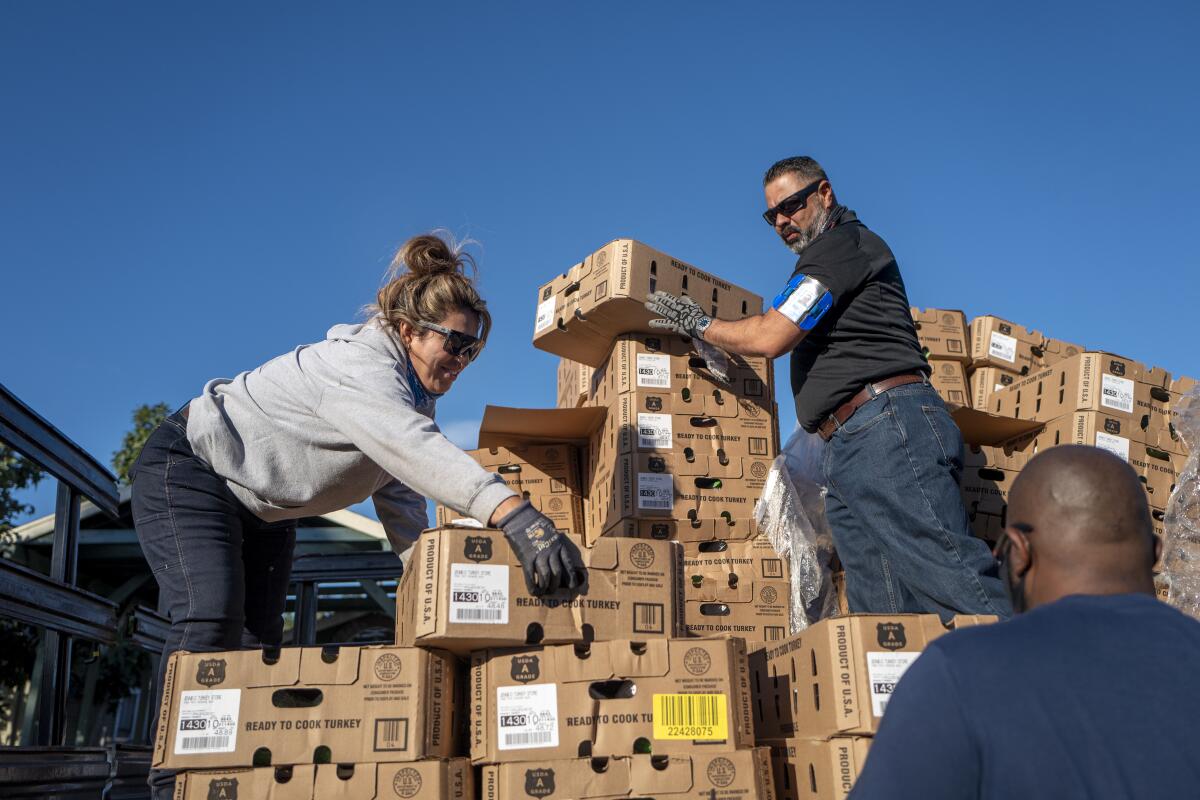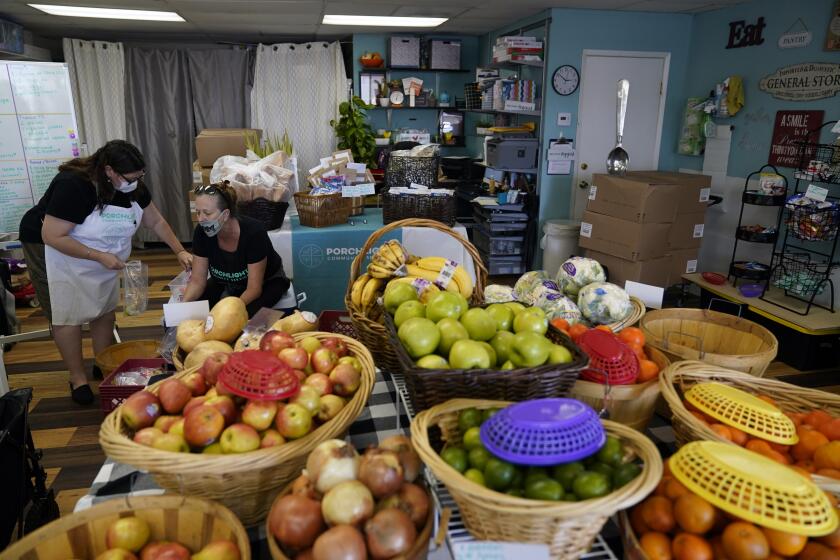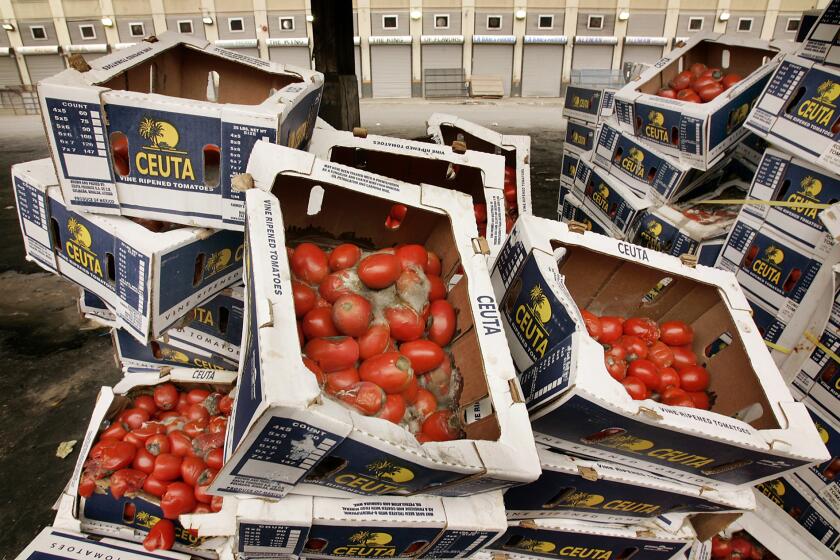Editorial: Let’s end hunger in Los Angeles County

- Share via
Holidays are a time of get-togethers and feasts. But for many families, just getting enough to eat is a struggle. According to USC researchers, 1 in 4 Los Angeles County residents experience food insecurity. That means they lack consistent access to regular food, often because of poverty.
A family that is food insecure might have enough for the kids to eat but not for the adults. Or they may have food some days but not others. Poor nutrition affects children’s growth and development, sometimes resulting in learning difficulties. The long-term effects of food insecurity are a shortened life span and chronic conditions such as diabetes or hypertension.
In this land of plenty, where billions of pounds of food a year are wasted, no one should go hungry.
In September, President Biden pledged during the White House Conference on Hunger, Nutrition, and Health to end hunger by 2030. And the county now has a blueprint for eradicating food insecurity by 2030 for its more than 10 million residents, developed by the L.A. County Food Equity Roundtable, a collaboration of public, private, nonprofit and philanthropic entities. The plan calls for transforming the food distribution system with a wide range of solutions, including creating more urban farms, connecting small food shops with local food producers and advocating for policy changes such as the expansion of state benefits for low-income residents.
The U.S. government already spends hundreds of billions of dollars on the food system. That investment should be transformative.
The goal is to create long-term solutions to hunger and food insecurity in the most populous county in the country. Those most likely to suffer food insecurity are low-income, homeless, single parents, undocumented immigrants, people with disabilities, LGBTQ, 65 years and older and young adults. Undoubtedly, it’s a huge challenge even though regional food banks and other efforts to address food insecurity have existed for decades. As a result, the plan is ambitious and presents enterprising solutions that can be set in motion immediately.
For example, the roundtable envisions remaking the food system to incentivize locally grown, healthy food in public food programs such as free school lunches or meals on wheels and to support local and community farming by, among other things, promoting nontraditional farming such as hydroponics, making it easier to open more farmers markets and opening more community gardens in dense, low-income neighborhoods.
The plan also calls for examining ways to redistribute food waste such as using “storage hubs” and providing free vouchers for food delivery, similar to a current DoorDash program operating in cities such as Oakland and Riverside.
It’s a bit of an everything-but-the-kitchen-sink approach, but if these ideas can significantly reduce hunger in the county, they are worth exploring.
The Los Angeles County Board of Supervisors is expected to approve the plan since it set the group in motion in February 2021. In the early months of the pandemic, the county established a food security branch within its emergency operations center to address high levels of food insecurity at a time of high unemployment and disruptions in the global food distribution system. Kudos to supervisors for having the vision to strategize beyond the pandemic for more permanent relief for residents. After all, food insecurity is not new. Since the county began keeping an annual tally in 2002, a minimum of 1 in 5 county residents have suffered food insecurity each year.
Investing $14 billion a year over the next decade can eliminate 45 million tons of food waste each year — a reduction of 75 million tons of greenhouse gases.
Because even the best-crafted plan will languish without a champion, county supervisors should appoint a food policy director, commonly called a “food czar,” and give them the authority to make policy changes and create partnerships with municipal leaders, nonprofits, community advocates and other key players.
Nationally, the idea of a food czar has been proposed by chef and humanitarian José Andrés, who has suggested that Biden create this position within the National Security Council. Other places that have or have had food policy directors include New York City, Austin, Baltimore, Denver and Washington, D.C.
In Baltimore, the city’s food czar created a detailed map pinpointing the city’s low-income areas that lacked access to healthy food to better understand community needs and to use in crafting policy. For example, the economics and development officer at the Baltimore Development Corp. used this map in their work attracting and retaining grocery stores. The food czar also examined food procurement contracts to ensure these included nutritious food, emphasized local food production and prioritized high-need areas.
A bold vision calls for an ambitious leader who is accountable to county supervisors and can carry on the work year after year. We cannot rely on philanthropy to help lead such important work indefinitely.
The county has a sound plan to end hunger in the county by 2030. Now, let’s put it into action.
More to Read
A cure for the common opinion
Get thought-provoking perspectives with our weekly newsletter.
You may occasionally receive promotional content from the Los Angeles Times.












